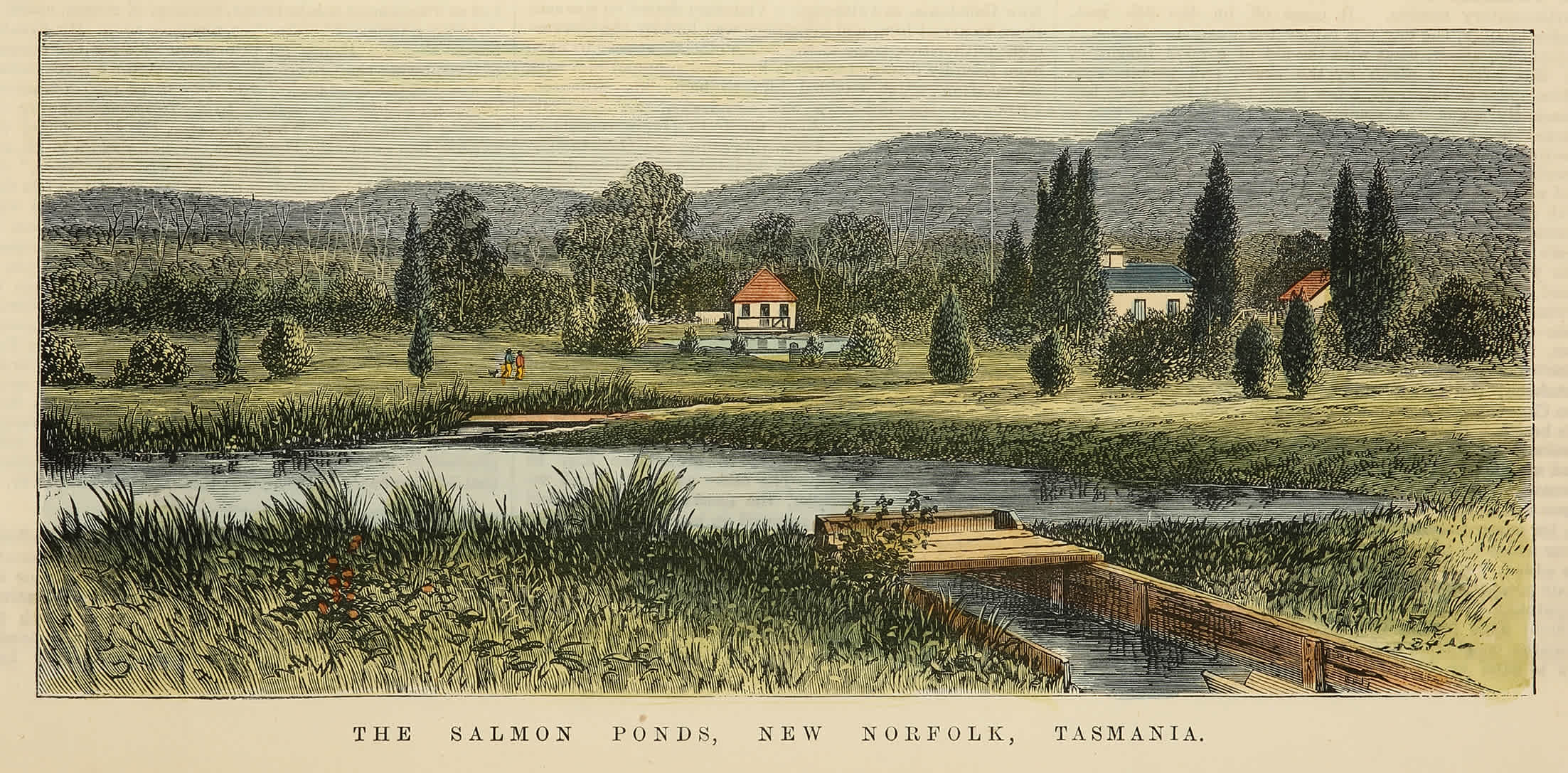There is something sleeping in a cavern beneath a waterfall in the central highlands; something that stalks the endless forests of the south west throughout the night; something that hides in the streets of Launceston, watching from the corners of old sandstone buildings with huge, bright eyes.
You can learn a lot about a place from the stories it tells itself. I often use fairy tales in classes and workshops to show the way that purpose permeates an author’s work, and in whatever form they take, the enduring power of the fairy story is evident in its longevity. The present soon becomes the past, but “Once upon a time” never dies.
Reading Angela Carter’s collections of fairy tales from around the world recently, I was surprised by the way that magic, romance, trickery and the monstrous can all be tracked across innumerable continents and cultural groups. Some of our most enduring narratives are also our most bizarre, but we find in them a glorious sense of suspension of disbelief, surprise and strangeness. Although many have their issues from a modern perspective, they also have myriad strengths, and reading them is an exercise in how much has not changed in the intervening centuries.
Reflecting on this global storytelling tradition also highlights a clear personal deficit: the Tasmanian fairy tale. Of course there are vital and valuable narratives and beliefs in our history from thousands of years of this land before colonial arrival, but nevertheless I believe that there is a place for further growth of our island’s imagination and creative psyche.
So many people have stood in our forests, waited at the edges of our waterfalls or driven alone on our long stretches of road in the night and have undoubtedly felt, as I have, the presence of something else, and the term “fairy tale” itself has become almost a cliché when describing Tasmania’s beauty.
It could be argued, of course, that there is no need for the constant invention and reinvention of a mythology in a land which does so much of the work for itself. Here, some might say, we simply live in magic, rather than trying to make it up all the time. Still, there is a power to our dreaming. As a child, I would run through the woods beyond our family farm until I was sure I was lost, chasing monsters and searching for friendly creatures that really lived only inside my head. JRR Tolkien wanted desperately to build new mythologies for the United Kingdom when writing The Lord of the Rings, and since the creation of Peter Jackon’s film franchise, New Zealand has also been able to capitalise on marketing itself as “the real Middle Earth”. Comparison between Tasmania and those landscapes is never too far behind.
One of the reasons I have become such an ardent advocate of Robbie Arnott’s work in both Flames and The Rain Heron is precisely due to the way that he achieves a broadening of the magic that we might be hiding. Through his evocation of giant, violent, weather-changing animals – rakali that believe themselves to be gods, and women that return from death and the earth with the landscape now embedded in their bodies – I would argue that an enormous part of Arnott’s success is his seamless braiding of the geographical, the personal and the fantastical in equal measure. Writing like this is said to “capture” the imagination, but this is not confinement. What a good fairy tale really does is set us free.
. . .
We may think that we are above such childish things, but there is precedent for our penchant for mythological thinking. Tasmania’s greatest fairy story is the narrative of our tiger, which remains even now a creature that we dream of constantly. No matter how much time goes by without a reliable sighting, perhaps we will always be captivated by grainy footage of a random wallaby running past a blurred camera. On long drives, we point out into the distant hills and say, “Don’t tell me it isn’t out there.” We beg for belief, perhaps out of a genuine desire for discovery, but perhaps also simply because we love to dream.
Why shouldn’t we? The stories we tell are the life-breath of our imagination. I will never forget the tale of the Cottingley girls, who took photos of themselves with a parade of cut-out cardboard fairies and managed to convince even the most famous champion of rationalism, Sir Arthur Conan Doyle, that the creatures were real, with the truth only coming out years after his death.
We need not necessarily cast our skepticism entirely to the side when we talk about these ideas, of course. Just because we broaden the horizon of our creativity does not mean that we must simultaneously insist on believing everything that we see, hear or read. Still, I believe that there is something missing in our perception of Tasmania. There is something sleeping in a cavern beneath a waterfall in the central highlands; something that stalks the endless forests of the south west throughout the night; something that hides in the streets of Launceston, watching from the corners of old sandstone buildings with huge, bright eyes.
Fairy tales began, all around the world, because people knew that there was value in dreaming. If you listen quietly, those dreams are whispering, even now. Like strips of flash paper, they burn and fade. We must catch them. We must share them.
We must, for just a minute, believe.
Lyndon Riggall is a northern Tasmanian writer and English teacher at Launceston College and co-host, with Annie Warburton, of the Tamar Valley Writers’ Festival Podcast. His first picture book for children, Becoming Ellie, was published by Forty South in 2019. He can be found at www.lyndonriggall.com.








